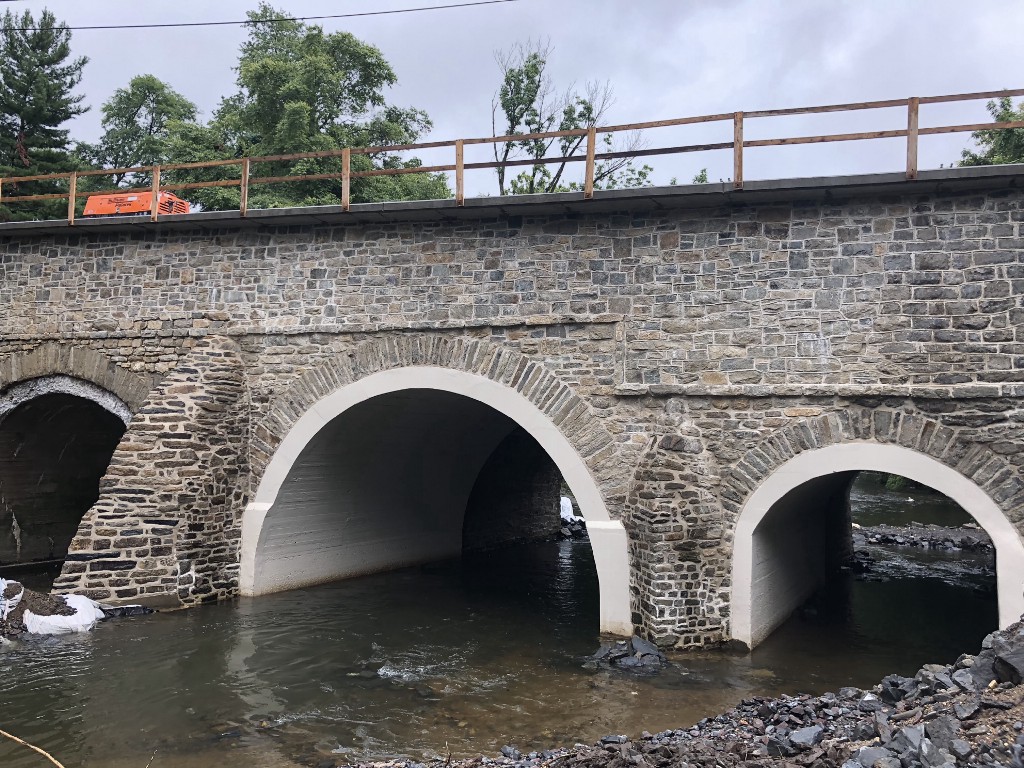The project designer for the Frankford Avenue bridge over Pennypack Creek rehabilitation visited the Northeast Philadelphia History Network to discuss the project.

Being the oldest bridge in the country means the Frankford Avenue bridge over Pennypack Creek got special attention when undergoing repairs.
At Northeast Philadelphia History Network’s October meeting, attendees heard from Michael Cuddy, the project designer for the bridge’s rehabilitation and vice president of TranSystems Corp. Established circa 1697, rehabilitating the 321-year-old bridge was no small undertaking.
Cuddy said the recent rehabilitation, which lasted from late March to early September, was a timely decision.
“If we didn’t rehabilitate the bridge now and came back to it five or 10 years down the line, the condition might have been too far gone,” he said.
Despite several challenges imposed by the bridge’s structure and the weather, the project met its ultimate deadline, a feat Cuddy called “remarkable.”
The team encountered its first major obstacle five feet deep into the excavation. They encountered a large concrete deadman, used in construction as anchors built into the ground. The concrete extended 10 feet from the curb line and nine feet deep over one of the arches.
“This explained why [parts of the bridge] were in such good condition,” Cuddy said, as the deadman helped other parts of the bridge resist constant force from traffic.
It posed a problem because there were gaps of up to two feet between the masonry and the concrete, which meant they couldn’t fill those voids with concrete and be certain they were stable.
“The decision was made to remove this deadman,” Cuddy said. The contractor had to put up a temporary support system to maintain stability while it was removed.
A second major obstacle arose on April 16 when a storm struck the area and caused flooding. A centering system of support had been placed under the masonry of the bridge’s arch as they removed stones. Flooding dislodged the centering systems by up to two feet laterally, knocking scaffolding out of their positions.
“I was out there taking photos that day and I was amazed,” Cuddy said. “I couldn’t believe the flow that was coming through there.”
The crew had to “do some engineering on the fly,” and revised their work sequence to avoid excavating too much at a time and run the risk of losing any of the structure.
Cuddy said they ended up with about 15 to 20 percent new stone on the bridge’s north wall.
“We found once you got one stone layer in, you lost any evidence of any mortar between the stones, so the stones were subjected to a lot of water infiltration. So we lost a lot of stones on the inside portion of the wall,” Cuddy said.
Cuddy said PennDOT expects the rehabilitation to have a 25-year lifespan before needing rehabilitation again, though Cuddy said his personal opinion was that that project quality was good enough to last 50 years.
NPHN meets the first Wednesday of every month, usually at Pennepack Baptist Church, 8732 Krewstown Road. ••





